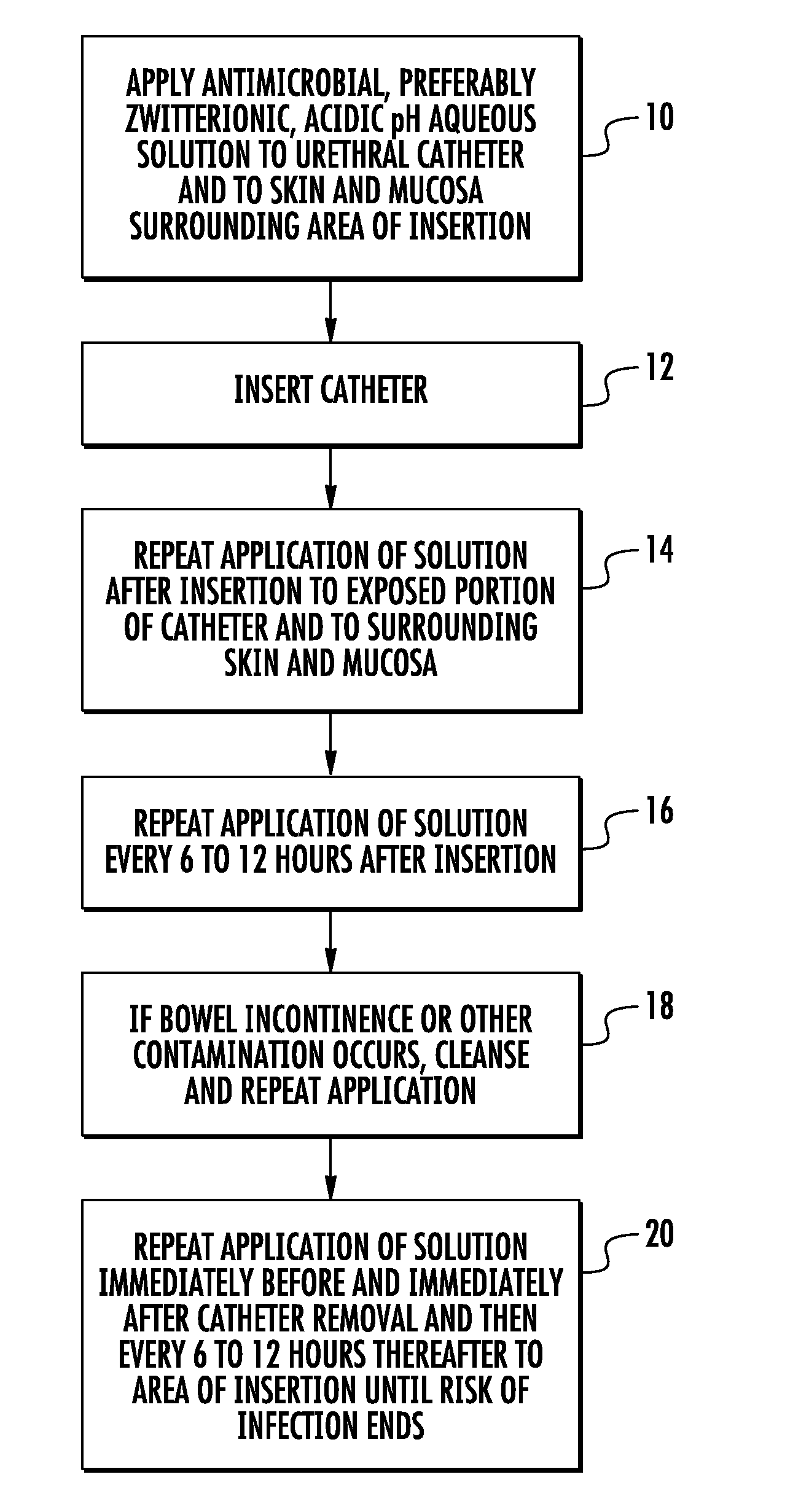Method for maintenance of urethral catheters
- Summary
- Abstract
- Description
- Claims
- Application Information
AI Technical Summary
Benefits of technology
Problems solved by technology
Method used
Image
Examples
example 1
[0065]A trial was conducted at First Health Moore County Regional Hospital, a 395 bed facility, in Pinehurst, N.C. from August to October 2013. Prior to the trial, First Health's CAUTI rate was similar to other similar size hospitals in North Carolina. After reviewing the CAUTI's that occurred at First Health, it was discovered that the majority of CAUTI's occurred after a Foley catheter had been in place for greater than 5 days, which lead the hospital to believe that it had issues with the care and maintenance of catheters. The hospital then used Theraworx® brand solutions in July of 2013 in its intensive care unit, or ICU, and began the trial in August. Hospital personnel were directed to apply Theraworx® brand solution to the perineum as a pretreatment step, both before and immediately after insertion as described hereinabove and to implement a maintenance treatment step every 8 hours while the catheter was inserted.
[0066]In the same time period a year earlier the hospital had 4...
example 2
[0069]A trial, using the Theraworx solution, was conducted at five intensive care units at Baptist Hospital, a 383 bed facility in Lexington, Ky. The purpose of the hospital study was to determine whether the use of a colloidal silver impregnated wipe and foam cleanser, which was the Theraworx® brand solution, when used as part of a cleansing protocol within the current Foley catheter care protocol practiced by the hospital would be efficacious in reducing the incidence of CAUTI's in the intensive care setting.
[0070]Mean infection rates in the five ICU's in 2012 ranged from 1.2 infections per 1000 device days to 5.9 infections per 1000 device days. The hospital performed the steps of the protocol starting in April 2013, including cleansing the perineum prior to insertion with Theraworx® and allowing the solution to dry in air for 30 seconds, opening the sterile Foley catheter and cleansing the Foley catheter with Theraworx®, wiping the meatus with Betadine®, and inserting he cathete...
example 3
[0075]John Muir Medical Center in Walnut Creek, Calif., undertook a study as a quality improvement project in its emergency department, the study undertaken from April 2013 to Jul. 10, 2014, to evaluate the impact of Theraworx® brand antiseptic used in protocols for urinary catheter insertion and maintenance for CAUTI prevention in hospitalized patients. CAUTI's were defined according to the definitions of the Centers for Disease Control and Prevention National Heathcare Safety Network. The John Muir study specifically refers to the Prevention Guidelines of the Healthcare Infection Control Practices Advisory Committee (HICPAC) and to Gould C. V., Umscheid C. A., Agarwal R. K., et al.
[0076]The “Guideline for Prevention of Catheter-Associated Urinary Tract Infections 2009,” which was accessed by John Muir Medical Center in 2014, recommends, in contrast to the method of the invention studied at John Muir and the subject matter of the invention described herein, that antiseptic solution...
PUM
| Property | Measurement | Unit |
|---|---|---|
| Time | aaaaa | aaaaa |
| Time | aaaaa | aaaaa |
| Time | aaaaa | aaaaa |
Abstract
Description
Claims
Application Information
 Login to View More
Login to View More - R&D
- Intellectual Property
- Life Sciences
- Materials
- Tech Scout
- Unparalleled Data Quality
- Higher Quality Content
- 60% Fewer Hallucinations
Browse by: Latest US Patents, China's latest patents, Technical Efficacy Thesaurus, Application Domain, Technology Topic, Popular Technical Reports.
© 2025 PatSnap. All rights reserved.Legal|Privacy policy|Modern Slavery Act Transparency Statement|Sitemap|About US| Contact US: help@patsnap.com



